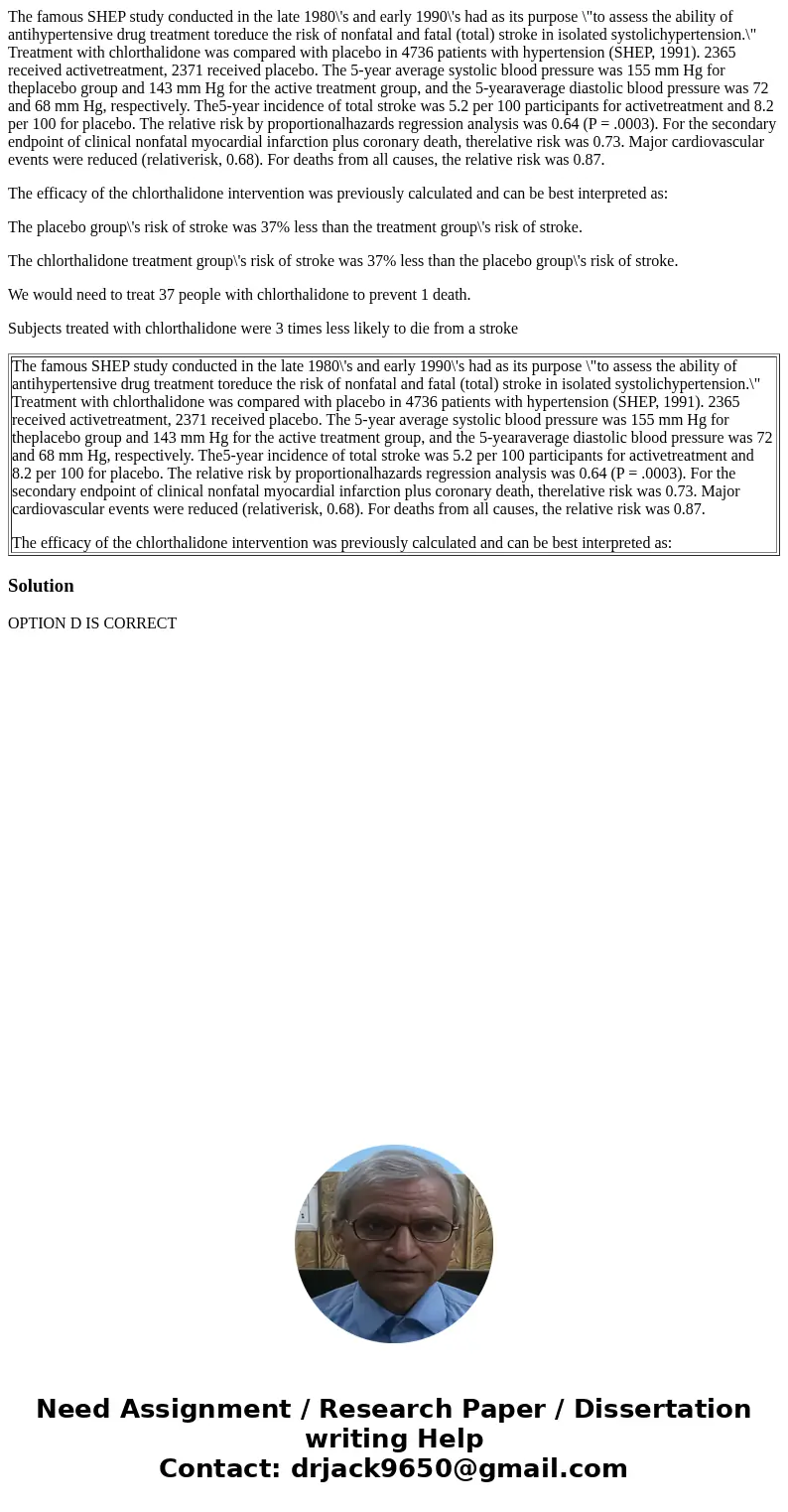The famous SHEP study conducted in the late 1980s and early
The famous SHEP study conducted in the late 1980\'s and early 1990\'s had as its purpose \"to assess the ability of antihypertensive drug treatment toreduce the risk of nonfatal and fatal (total) stroke in isolated systolichypertension.\" Treatment with chlorthalidone was compared with placebo in 4736 patients with hypertension (SHEP, 1991). 2365 received activetreatment, 2371 received placebo. The 5-year average systolic blood pressure was 155 mm Hg for theplacebo group and 143 mm Hg for the active treatment group, and the 5-yearaverage diastolic blood pressure was 72 and 68 mm Hg, respectively. The5-year incidence of total stroke was 5.2 per 100 participants for activetreatment and 8.2 per 100 for placebo. The relative risk by proportionalhazards regression analysis was 0.64 (P = .0003). For the secondary endpoint of clinical nonfatal myocardial infarction plus coronary death, therelative risk was 0.73. Major cardiovascular events were reduced (relativerisk, 0.68). For deaths from all causes, the relative risk was 0.87.
The efficacy of the chlorthalidone intervention was previously calculated and can be best interpreted as:
The placebo group\'s risk of stroke was 37% less than the treatment group\'s risk of stroke.
The chlorthalidone treatment group\'s risk of stroke was 37% less than the placebo group\'s risk of stroke.
We would need to treat 37 people with chlorthalidone to prevent 1 death.
Subjects treated with chlorthalidone were 3 times less likely to die from a stroke
| The famous SHEP study conducted in the late 1980\'s and early 1990\'s had as its purpose \"to assess the ability of antihypertensive drug treatment toreduce the risk of nonfatal and fatal (total) stroke in isolated systolichypertension.\" Treatment with chlorthalidone was compared with placebo in 4736 patients with hypertension (SHEP, 1991). 2365 received activetreatment, 2371 received placebo. The 5-year average systolic blood pressure was 155 mm Hg for theplacebo group and 143 mm Hg for the active treatment group, and the 5-yearaverage diastolic blood pressure was 72 and 68 mm Hg, respectively. The5-year incidence of total stroke was 5.2 per 100 participants for activetreatment and 8.2 per 100 for placebo. The relative risk by proportionalhazards regression analysis was 0.64 (P = .0003). For the secondary endpoint of clinical nonfatal myocardial infarction plus coronary death, therelative risk was 0.73. Major cardiovascular events were reduced (relativerisk, 0.68). For deaths from all causes, the relative risk was 0.87. The efficacy of the chlorthalidone intervention was previously calculated and can be best interpreted as: |
Solution
OPTION D IS CORRECT

 Homework Sourse
Homework Sourse